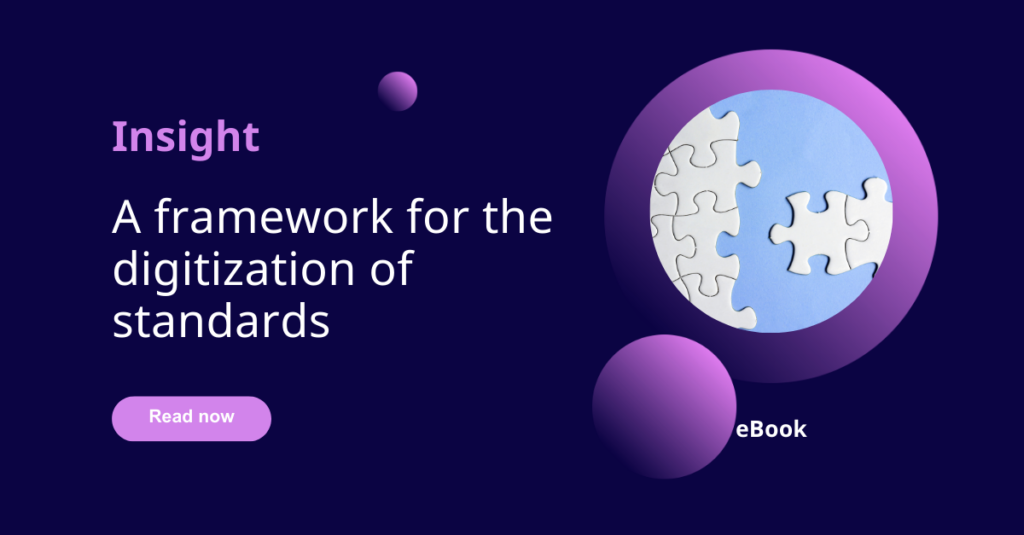With much focus on smart standards, standards development organizations (SDOs) are looking at paths forward that will take them from static documents to digital information.
Standards are typically produced as documents and thus are written, stored and managed as single files, usually as PDFs.
For standards consumers, this poses a particular challenge. Standards are functional and once understood (i.e. ‘read’), are used in the creation of further documentation that guide business operations. Copying and pasting from these documents and into the various systems that make up today’s business landscape creates additional problems – both for the consumer and the SDO:
- It eliminates a single source of truth
- It is hard to trace back the documentation copied and pasted from standards to the original source.
- It is difficult to manage specific information
As your SDO goes about evolving the delivery model, moving towards smart standards and standards as a service, it might seem like ‘evolution’ must be synonymous with ‘total overhaul’ and the kind of transformation that incurs a hefty price tag as well as introducing complexity for staff, particularly where new tools are concerned.
The benefits of structured content in making content flexible and capable of serving the digital needs of customers are undeniable. However, obliging SMEs to learn complex tooling can become such a hindrance to the natural workflow as to result in abandonment.
As SDOs consider the routes ahead to digital transformation and smart standards, time is of the essence in tackling the threat to revenue streams from paper- and portal-based publishing paradigms.
Solving challenges for standards consumers with Microsoft Word
There are ways to achieve smart standards and deliver standards as a service without needing to move either SMEs – or indeed, consumers of standards – away from Microsoft Word.
While it requires a change on the back end, it does not demand a complete overhaul of familiar tools. By leveraging content models such as componentization, content becomes much more flexible and enables standards producers to add value to consumers through APIs. Componentization allows content to be managed at a micro level, rather than solely at the document level.
From a user-friendly interface, content can be opened directly in Microsoft Word. Staff work as normal, adding changes, and once saved, the edits are automatically reflected in the system.
Key to this approach is ensuring complete audit trails so users can see a full version history of content changes over time, giving your organization full visibility over your standard and the update process. Componentization also allows for fine-grained control over content for example, through the addition of metadata.
Updating content in Microsoft Word
Flexible content models for the production and consumption of standards
As SDOs consider the routes ahead to digital transformation and smart standards, time is of the essence in tackling the threat to revenue streams from paper- and portal-based publishing paradigms. SDOs do not need to move SMEs away from familiar tools to embrace Standards as a Service and solve consumers’ pressing reuse issues. They can do so in Microsoft Word while reaping the benefits of flexible content models.


